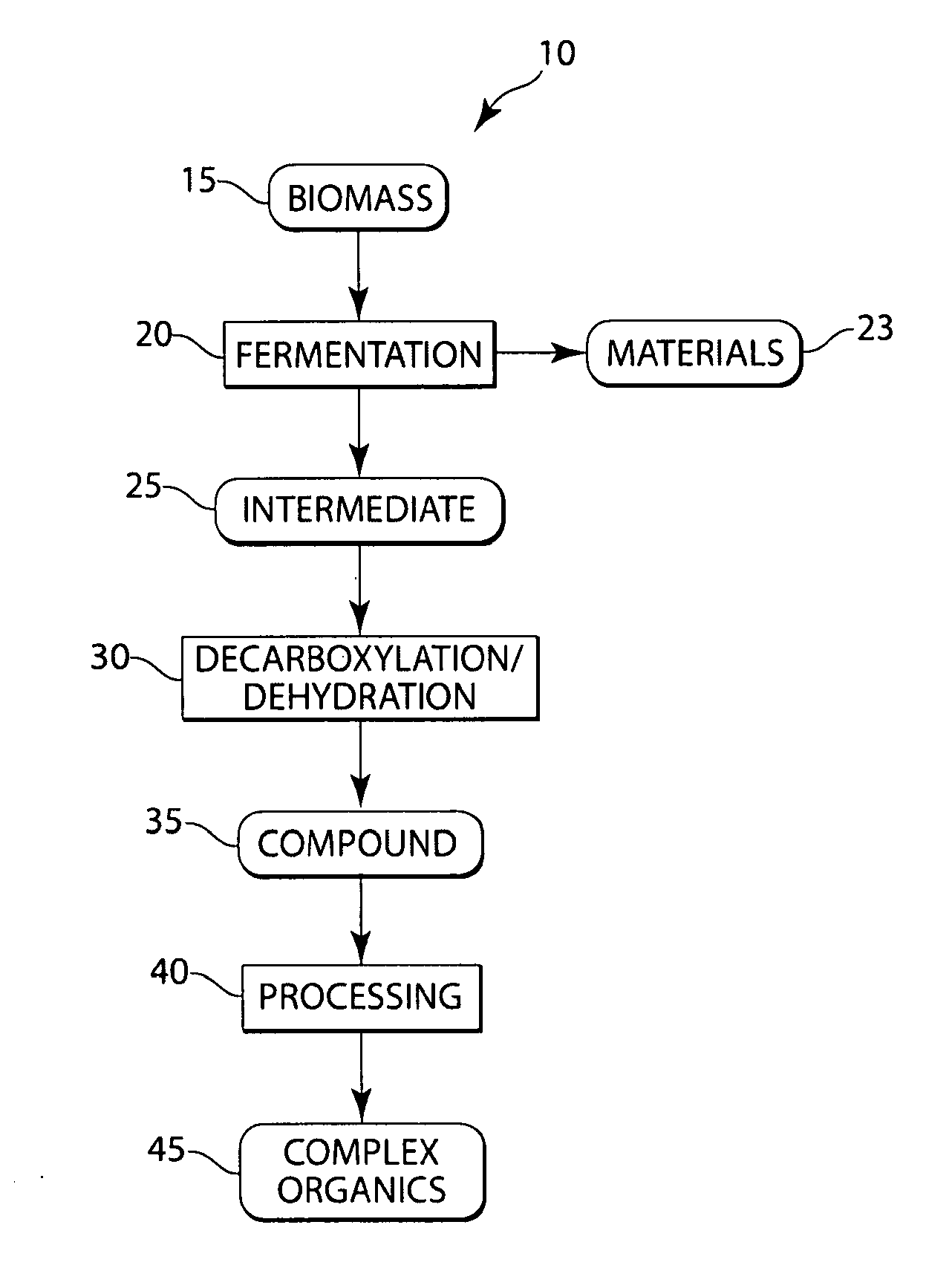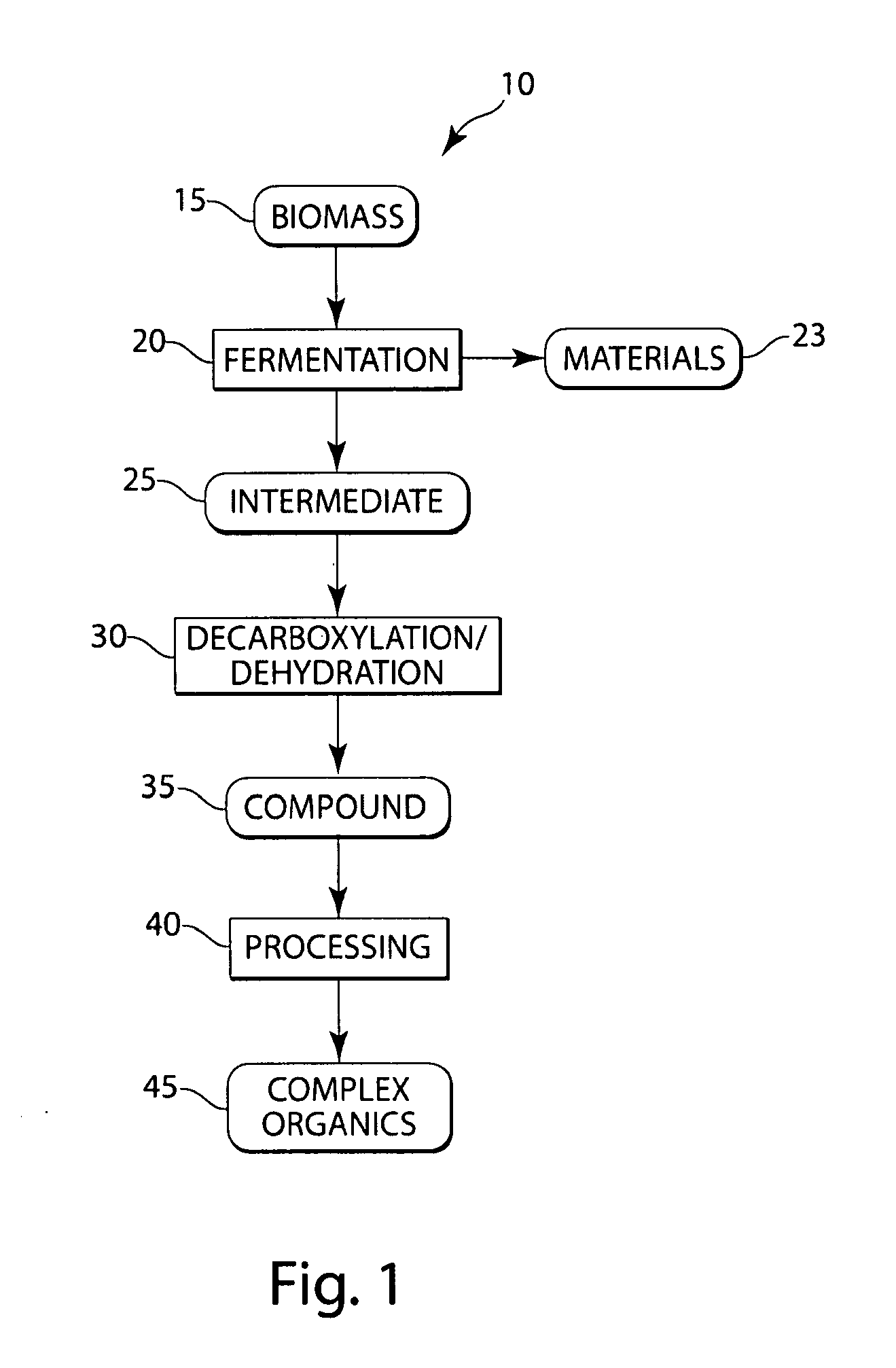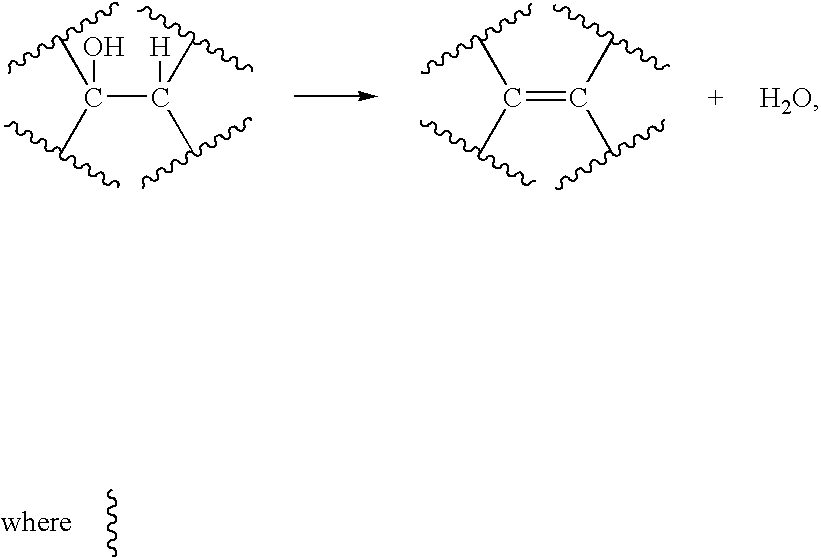Conversion of natural products including cellulose to hydrocarbons, hydrogen and/or other related compounds
a technology of natural products and conversion methods, applied in the direction of hydrocarbon oil treatment products, waste based fuel, organic chemistry, etc., can solve the problem of not knowing the economic route to renewable propan
- Summary
- Abstract
- Description
- Claims
- Application Information
AI Technical Summary
Method used
Image
Examples
example 1
[0038]In this example, biologically derived polyhydroxybutyrate (“PHB”), at 1 wt % in water, was reacted in a batch reactor that was exposed to a 400° C. sandbath for 20 minutes, before being quenched. Macroscopic quantities of propylene were recorded, and about 20% of the headspace gases were propylene, as determined by GC (gas chromatography) analysis. The reaction was designed to have a density of about 300 kg / m3 and a pressure of about 285 bar. Estimates of the yield of propylene on PHB charged revealed that up to about 47% of the PHB may have been converted selectively to propylene. The propylene yield on PHB consumed was higher, however, because visual inspection revealed that the liquid phase in the reactor after re-cooling was milky and turbid, indicating that some solid, unconsumed PHB polymer remained suspended in this phase.
[0039]At the time of the experiments, standards of C1-C6 paraffins and C2-C6 olefins had just been purchased and run to get one point calibrations, bu...
example 2
[0045]This example describes the production of potassium butyrate in a CSTR (Continuously Stirred Tank Reactor) at 425° C. Butyric acid at 20 g / L, buffered to a of about pH 8 with potassium hydroxide, was run in a CSTR at 5 mL / min. A high gas flow rate was observed, and the two dominant species observed were propane and propylene, as observed by residence time on GC (gas chromatography). Results showed yields on the order of 5% for propane, although equipment conditions precluded precise determination of yields, etc. in this example. During the run, the temperature varied somewhat between 415° C. and 441° C.
[0046]Table 2 shows gas flow rates were observed, as measured with an inverted graduated cylinder and a stopwatch. Times are as recorded; if no time is noted, then multiple flow rates were taken consecutively. Table 3 illustrates gas compositions as were measured by GC. Percentages are volume percent.
TABLE 2Clock timeFlow rate (mL / min)17:311.4017:474.2917:515.013.4118:242.9018:32...
PUM
| Property | Measurement | Unit |
|---|---|---|
| pressure | aaaaa | aaaaa |
| temperature | aaaaa | aaaaa |
| energy | aaaaa | aaaaa |
Abstract
Description
Claims
Application Information
 Login to View More
Login to View More - R&D
- Intellectual Property
- Life Sciences
- Materials
- Tech Scout
- Unparalleled Data Quality
- Higher Quality Content
- 60% Fewer Hallucinations
Browse by: Latest US Patents, China's latest patents, Technical Efficacy Thesaurus, Application Domain, Technology Topic, Popular Technical Reports.
© 2025 PatSnap. All rights reserved.Legal|Privacy policy|Modern Slavery Act Transparency Statement|Sitemap|About US| Contact US: help@patsnap.com



